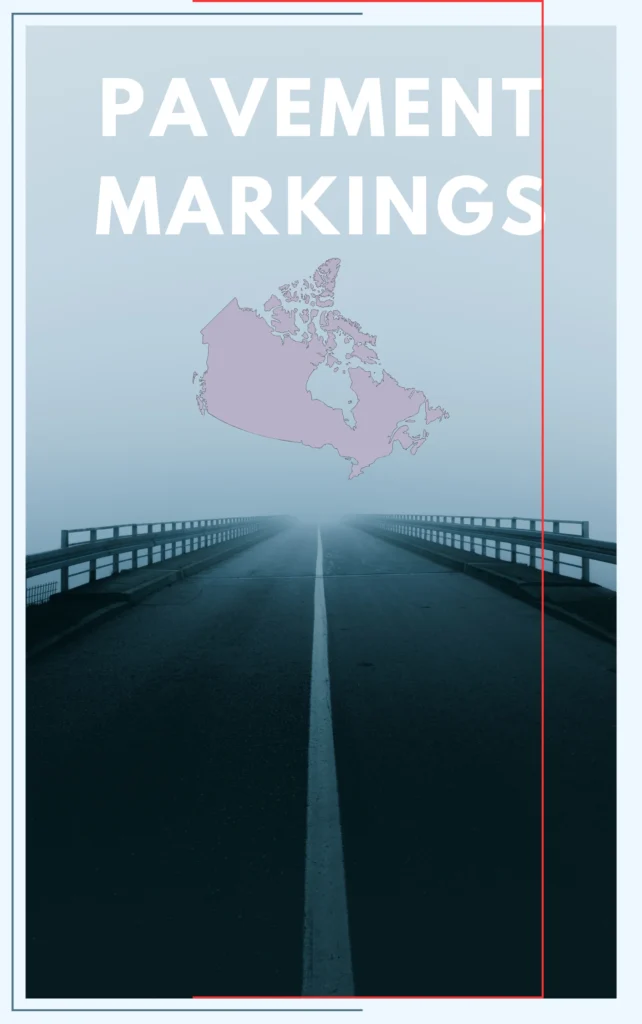Pavement markings play a key role in traffic and road maintenance and act as a silent guide for both drivers and pedestrians.
These visual signals, strategically painted or applied to the road surface, convey important information, regulate traffic flow and make an important contribution to overall road safety.
In this comprehensive report, we learn about different street markings, their purpose, the materials used and the importance of maintaining the markings for the well-being of road users.
Types of pavement markings:
White lane markings:
A single continuous white line is usually used to mark the right edge of the road. These lines separate traffic moving in the same direction. Double-solid white lines: These lines indicate that overtaking is prohibited, emphasizing the importance of staying in the lane. White dashed lines: lines in the middle of roads indicate that overtaking is allowed, ensuring safe overtaking.
Yellow lane marking:
A solid yellow line marks the left side of the road, helping drivers maintain their position on the road. Double Yellow Lines: Avoid overtaking in areas where the lines are solid, but allow overtaking when the line is broken, ensuring safe overtaking.
Junction Marking:
Junction: Alternating black and white stripes mark designated junctions, promoting safe crossing.
Parallel lines: These lines connect the edges of the road to indicate the pedestrian area.
Stop Lines and Return Lines:
Stop Lines: Lines painted in front of intersections indicate where vehicles must stop to allow safe and orderly traffic.
yield lines: used where drivers must yield to oncoming traffic. These lines help to avoid collisions and maintain order.
Special pavement markings:
Arrows show the direction of traffic, especially in a lane reserved for certain movements, such as turning left or right.
Cycle lanes: These lanes are demarcated with special symbols and markings and provide designated areas for cyclists, improving road safety for both cyclists and motorists.
Materials used in pavement marking:
Thermoplastic paint
Thermoplastic paint, known for its durability and longevity, melts into the pavement, creating a solid and reflective marking. Epoxy-based paint offers excellent adhesion to the road surface for long life and visibility, even in bad weather conditions.
Eco-friendly and cost-effective water-based paint is commonly used for temporary marking, road maintenance and quick painting.
Importance of pavement markings:
Improving road safety:
Pavement markings provide important information to motorists, guiding them safely through intersections, lane changes and pedestrian crossings.
The reflective materials used on the markings improve visibility at night, in bad weather conditions and in low light.
Regulation of traffic flows:
By clearly distinguishing lanes, intersections and turns, pavement markings promote efficient traffic management, minimize congestion and promote smooth movement for pedestrian Safety.
Avoiding accidents:
Stop lines, lines and directional arrows play a vital role in preventing collisions and accidents and provide clear guidance to the driver.
Maintenance and Challenges:
Routine Inspections: Regular inspections are required to detect faded or damaged markings and prompt repainting or repair.
Weather and Wear: Severe weather conditions and heavy traffic can cause pavement markings to wear, requiring regular maintenance and, in some cases, the use of more durable materials.
Technological Advances:
New technologies, such as smart roads with integrated sensors and LED signaling, are paving the way for more dynamic and responsive pavement marking systems.

Conclusion:
Pavement markings are the unsung heroes of road safety, quietly guiding and directing millions of road users every day. Their importance cannot be overstated, as they contribute to accident prevention, efficient traffic management and the general well-being of pedestrians and motorists. As technology advances, expect innovations that will further improve the effectiveness of pavement markings and ensure safer and more organized roads for future generations. It is imperative that authorities recognize the importance of regular maintenance and invest in state-of-the-art solutions to meet the changing needs of modern transport systems.
